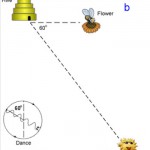 I attended my first apiary and cooping classes at the Biofuel Oasis in Berkeley to learn how to keep chickens and bees. Despite being only bee-curious and not bee-committed yet, it was fascinating to learn about the bizarre hierarchical structures of both species, and consider their similarities with human interactions.
I attended my first apiary and cooping classes at the Biofuel Oasis in Berkeley to learn how to keep chickens and bees. Despite being only bee-curious and not bee-committed yet, it was fascinating to learn about the bizarre hierarchical structures of both species, and consider their similarities with human interactions.
 Chickens are like a group of Queen Bee middle school girls (is this ironic?). If a chicken gets so much as a speck of blood on herself, there’s a decent chance the other hens will peck and cannibalize her to death. And watch out if you get sick! Sometimes a flock turns on one hen, and she has to be in solitary for life, because they will always attack her if given the chance. That’s a G-D pecking order for you! And if you want to introduce young chicks into an existing flock you need to toughen them up for bullying and illness – just like in middle school!
Chickens are like a group of Queen Bee middle school girls (is this ironic?). If a chicken gets so much as a speck of blood on herself, there’s a decent chance the other hens will peck and cannibalize her to death. And watch out if you get sick! Sometimes a flock turns on one hen, and she has to be in solitary for life, because they will always attack her if given the chance. That’s a G-D pecking order for you! And if you want to introduce young chicks into an existing flock you need to toughen them up for bullying and illness – just like in middle school!
 Bees are a different thing entirely – kind of like the Borg (Star Trek: TNG). If I understood this correctly, the actual Queen Bee mates with the drones one time (all of them? that seems poly-orgiastic!), then flies off to her brood spot and lays eggs for the rest of her life. She stores all that bee-sperm inside her for years as she selectively fertilizes some eggs to become new drones. The rest become worker bees, and last a mere few weeks before they die of shredded wings. Every hive has bouncers – guard bees that stop workers from other hives entering. But the drones are like the kept men, and can go wherever they want. Someone should tell these bees that women have the right to go places too! Guard bees are vicious, give them a chance and they’ll go straight for the eyes!
Bees are a different thing entirely – kind of like the Borg (Star Trek: TNG). If I understood this correctly, the actual Queen Bee mates with the drones one time (all of them? that seems poly-orgiastic!), then flies off to her brood spot and lays eggs for the rest of her life. She stores all that bee-sperm inside her for years as she selectively fertilizes some eggs to become new drones. The rest become worker bees, and last a mere few weeks before they die of shredded wings. Every hive has bouncers – guard bees that stop workers from other hives entering. But the drones are like the kept men, and can go wherever they want. Someone should tell these bees that women have the right to go places too! Guard bees are vicious, give them a chance and they’ll go straight for the eyes!
Bees are a critical part of the global food system, providing 80% of pollination worldwide. They pollinate 30% of the human diet, meaning without bees we’re pretty much screwed. Colony Collapse Disorder is sweeping through North American swarms, but no one knows exactly why they’re dying. An insect brain fungus infection, genetically engineered insecticides and herbicides have all been put forth as possible culprits, along with the general impacts of bio-accumulated toxins.
 My favorite mysterious bee-ism is their ability to communicate where food sources are to the hive. As they snuggle up with each other in the hive, the bees waggle directions to the best flower-patches. In my mind I’m humming Dancing in the Dark. This enchanting evolutionary ability may be related to CCD, however, as herbicides and pesticides have been proven to impact bees’ abilities to navigate, possibly leading to death.
My favorite mysterious bee-ism is their ability to communicate where food sources are to the hive. As they snuggle up with each other in the hive, the bees waggle directions to the best flower-patches. In my mind I’m humming Dancing in the Dark. This enchanting evolutionary ability may be related to CCD, however, as herbicides and pesticides have been proven to impact bees’ abilities to navigate, possibly leading to death.
 Learning about the social structures of chickens and bees, with clearly delineated hierarchies and primal urges both driving group dynamics, made me reflect on the same dichotomy in humans. We struggle to suppress our animal instincts – we are queen bees and pecking hens in human’s clothing. As I pursue animal husbandry and agriculture I look forward to the other Captain Obvious insights this city girl will garner.
Learning about the social structures of chickens and bees, with clearly delineated hierarchies and primal urges both driving group dynamics, made me reflect on the same dichotomy in humans. We struggle to suppress our animal instincts – we are queen bees and pecking hens in human’s clothing. As I pursue animal husbandry and agriculture I look forward to the other Captain Obvious insights this city girl will garner.


